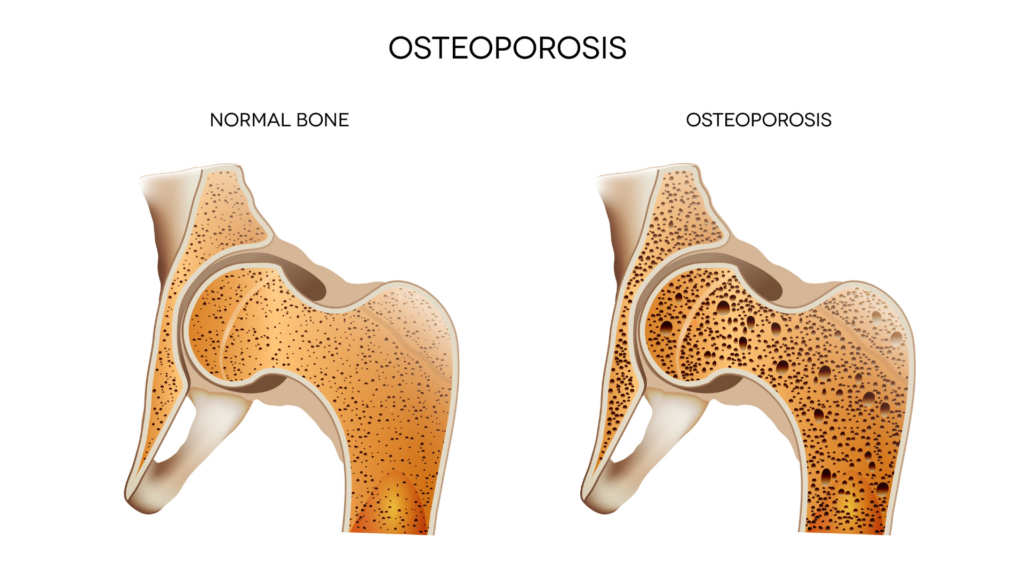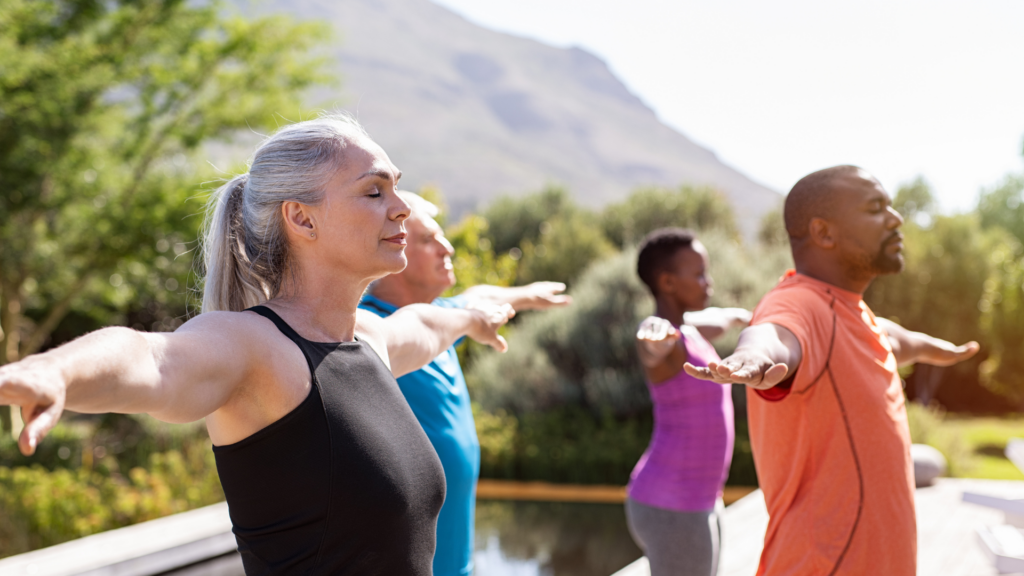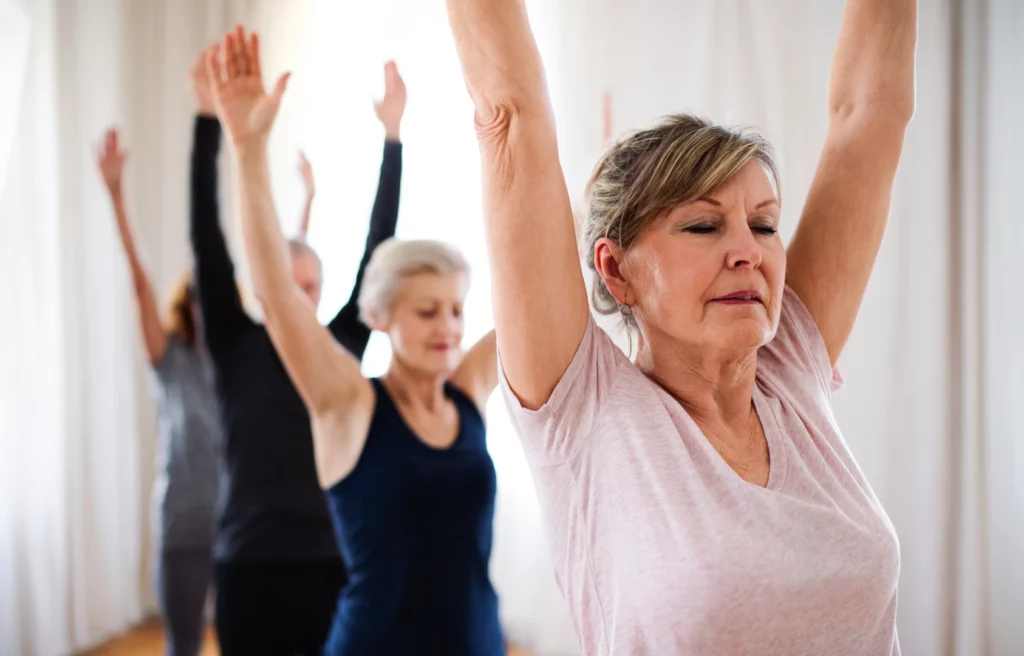11 Tips for Teaching Yoga Students with Osteoporosis

Article At A Glance
The main principle that applies to accommodating a yoga student with osteoporosis in a general yoga class is, “Do no harm.” We usually don’t have detailed information about the student’s specific situation in a class environment, so it is best to err on the side of caution. Included below are 11 key tips for teaching students with Osteoporosis.
Osteoporosis is a chronic disease that is characterized by porous, weakened bones. It usually presents as low bone mass (decrease in bone quantity) and deterioration of the microarchitecture of bones (decrease in bone quality). Since the quantity and quality of bone are reduced, the risk of fracture is increased. Most of these fractures occur in the spine (vertebrae), forearms (radius), or hip (femur). 
The fractures can happen following the most mundane tasks, like picking something off the floor. Falling is particularly problematic for folks with osteoporosis because of fracture risk. Fractures can lead to chronic pain, limited mobility, and even disfigurement, such as the forward stooped posture, which, in turn, can affect heart and lung capacity.
Osteopenia is a condition characterized by bone density loss and is very common with aging. Osteopenia is a risk factor for developing osteoporosis but doesn’t necessarily lead to it. Osteopenia often serves as a first wake-up call to address bone density.
Working with Yoga Students with Osteoporosis
Like any other systemic disease, when we work with a student with osteoporosis, we usually choose between two main paths: working around osteoporosis or working with it. Working around osteoporosis means evaluating every pose we teach in a group class from the perspective of whether it would be appropriate for a student with that diagnosis. Every yoga teacher needs to have basic knowledge of what substitutes to offer a student with osteoporosis within a general yoga class.
Working with osteoporosis in a small therapeutic group or one-on-one means obtaining much more detailed information about the student and their specific concerns. This includes test results, doctor’s recommendations, lifestyle, and other relevant factors. Then we can design a tailored yoga practice with all that information in mind. This usually falls within the scope of practice of a yoga therapist. We will begin our exploration with some general recommendations and cautions that every yoga teacher must be aware of if a student with osteoporosis appears in their yoga class.
Yoga for Osteoporosis: Teaching Challenges in a Group Yoga Class
The main principle that applies to accommodating a yoga student with osteoporosis in a general yoga class is “Do no harm.” We usually don’t have detailed information about the student’s specific situation in a class environment, so it is best to err on the side of caution.
- Avoid deep forward bends to minimize the risk of spinal fractures. Replace deep forward bends with axial extension poses with a chair or wall support.

- Avoid leveraging the body in poses. Choose open-frame postures and discourage students from pulling themselves deeper into the pose. Deeper is definitely not better when it comes to osteoporosis.

- Avoid deep twists, particularly twists with leverage. Do not combine twists with other directional movements of the spine. (Example: Twists + forward bend, twist + backbend). Do not allow spinal rounding while twisting; keep the spine long.

8 More Tips for Welcoming Students with Osteoporosis into Your Yoga Classes

- Weight-bearing movements can be good for strengthening the muscles and bones, but avoid bearing weight on hands for extended periods to minimize strain on sensitive wrist joints.
- Body alignment in poses is particularly important—maintaining a neutral spine position, supporting the forward tilt of the pelvis, aligning the upper body over the lower body without strain, etc. Make the pose easier if you see your students struggling with body alignment.
- It is beneficial to move the body in all directions of spinal movement; just don’t go too far. Keeping the spine supple and supported will help students be safer in their daily activities.
- It is useful to cross-train the muscles by combining pose repetition with pose holding to maintain muscle tone and develop muscle strength. Low muscle mass is significantly associated with osteoporosis, according to a study published in Osteoporosis International.
- Don’t repeat the same movement too many times to avoid repetitive stress on joints. Switch sides often when you do asymmetrical movements.
- Chest-expanding movements are generally beneficial but need to be approached with caution. Stooped posture is common with osteoporosis. We seek either to prevent it or counterbalance it. Being too aggressive with chest-opening maneuvers can be risky for the spine, some doctors of physical therapy say.
- It can be helpful to practice simple standing balance poses near a wall or chair if balance is an issue. In 2022, a four-week study found that seniors who performed gentle balancing poses (while standing near a chair or sitting on one) for 30 minutes a day experienced improvements in their static, dynamic and total balance scores compared to a control group.
- Don’t sneak up on students with adjustments. Startling your students can lead to sudden movements in weird positions, which is risky for their bodies.
Keep Your Class Slow and Steady

When we have a student with osteoporosis in a yoga class, we need to make sure that we keep the class pace slow and steady, without rushing, and without extreme ranges of movement. It is always useful to ask the student directly what kind of recommendations they’ve received from their healthcare provider and consider those recommendations in our decision-making process.
Also, read...
Book Review-Empowered Aging: Everyday Yoga Practices for Bone Health, Strength, and Balance
Yoga for Osteoporosis: How Your Breathing Affects Your Bones
Yoga Poses Improves Both Balance and Cognitive Perfomance, Study Suggests
Related courses

Educated as a school teacher, Olga Kabel has been teaching yoga for over 14 years. She completed multiple Yoga Teacher Training Programs but discovered the strongest connection to the Krishnamacharya/ T.K.V. Desikachar lineage. She had studied with Gary Kraftsow and American Viniyoga Institute (2004-2006) and received her Viniyoga Teacher diploma in July 2006, becoming an AVI-certified Yoga Therapist in April 2011. Olga is a founder and managing director of Sequence Wiz— a web-based yoga sequence builder that assists yoga teachers and yoga therapists in creating and organizing yoga practices. It also features simple, informational articles on how to sequence yoga practices for maximum effectiveness. Olga strongly believes in the healing power of this ancient discipline on every level: physical, psychological, and spiritual. She strives to make yoga practices accessible to students of any age, physical ability, and medical history, specializing in helping her students relieve muscle aches and pains, manage stress and anxiety, and develop mental focus.



